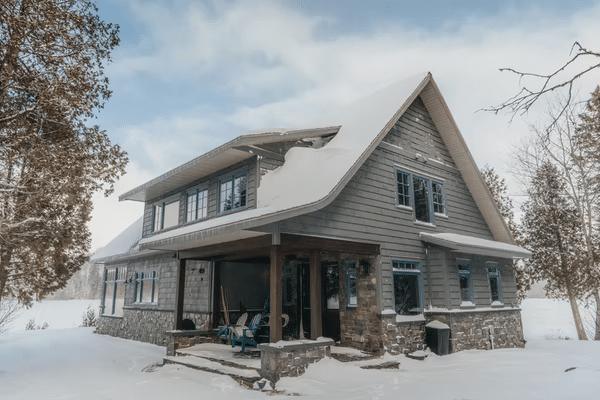Home Siding Replacement – Siding is your home’s primary line of defense against harsh weather conditions and pests. It also plays a significant role in improving your home’s aesthetic appeal. Read more on this article regarding ten signs you need a home siding replacement, also known as wall cladding.
Read also: 5 Things To Consider When Replacing Your Home Siding
1. Bubbles and blisters on your siding – Home Siding Replacement
One of the main reasons people install siding is to prevent moisture from entering the homes. If you notice blisters or bubbles forming beneath your siding’s surface, it could indicate that the siding is no longer performing its function. This could result in water damage to your property. You should contact the best siding expert to help you replace your wall cladding once you spot bubbling or spotting to avoid incurring expensive property loss.
2. Increased utility bills – Home Siding Replacement
Utility bills can cause a significant dent in your budget. For example, let’s say you notice a sudden increase in your utility bills and have already ruled out other factors such as irregular thermostat use, inefficient appliances, or rising electric rates, to mention a few that could result in increased energy consumption. In that case, you should consider replacing the home’s siding.
Siding plays a crucial role in retaining heat and cold in the house. This means that your HVAC system does not have to work twice as hard to regulate indoor temperatures, reducing energy consumption. Damaged or old siding does not offer proper insulation, resulting in increased utility bills, so you should consider a home siding replacement.
3. Cracked or warped siding – Home Siding Replacement
Some of the most apparent signs that your siding is damaged beyond repair are cracks, gaps, sags, and holes in your wall cladding’s surface. They indicate that your siding can no longer prevent water from seeping into the underlying surface, which results in rot and decay, so you should contact a professional contractor for home siding replacement.
4. Your current siding requires a lot of maintenance
Regular property maintenance prevents expensive repairs and improves the home’s aesthetic appeal. However, as your existing siding ages, the maintenance cycle also shortens, so you have to constantly seal and apply finishings, especially on the wood siding, which can be expensive and time-consuming. If you notice that you are spending more time and money maintaining your siding, consider replacing and upgrading it to a more durable, sturdy, and long-lasting material. This will free up your finances and time to allow you to focus on other projects.
5. Pest damage
Pests such as termites and woodpeckers can cause significant damage to your property. The best way to combat a pest infestation, especially in an area prone to pest attacks, is by eliminating anything that may appeal to pests. Consider replacing your home’s wall cladding with a siding material that’s less attractive to pests, such as the fiber cement product.
6. Mold, mildew, and fungus on your siding
Moisture is one of the greatest threats to your home’s safety and structural integrity. If you notice mold, mildew, or fungus on your wall cladding’s surface, it could indicate the presence of moisture. Have your home’s siding investigated by a professional to establish the cause of fungus, mold, and mildew, and replace the wall cladding if water is seeping into the siding.
7. A rotting siding
Your wall cladding is often exposed to natural elements, which could result in rotting. A quick visual inspection of your home’s siding could help you spot soft or crumbling wall cladding that indicates rotting. You should address rotting issues immediately, as rot could extend beyond the siding into your home’s walls, which could lead to structural damage.
8. Your home’s siding requires frequent painting.
The average wall cladding requires a fresh coat of paint every eight to 10 years. If you need to repaint your siding more frequently, say every three to six years, it could indicate an issue with the wall cladding and not the paint quality. Consider replacing the wall cladding if you notice chipping or peeling paint. You could invest in high-quality vinyl products with long-lasting colors that require little or no maintenance to cut the cost of constantly repainting your wall cladding.
9. The current siding does not match the desired exterior look
You do not have to wait for your existing siding to age or get damaged to consider replacing it. If the wall cladding does not match the exterior appearance you want for your home, you should consider contacting a reliable contractor to replace the product.
10. You want to move
If you plan to relocate and need to sell your home, replacing the siding is necessary. Installing new siding can boost your home’s curb appeal, increasing the chances of selling your home faster. Installing high-quality vinyl siding could also benefit from a higher home resale value.
Conclusion
If you’re wondering whether or not you should replace your home’s siding, look out for the above signs to make an informed decision. Be sure to choose the best siding experts for durable, low-maintenance, and aesthetically appealing wall cladding – Home Siding Replacement






Leave a Reply